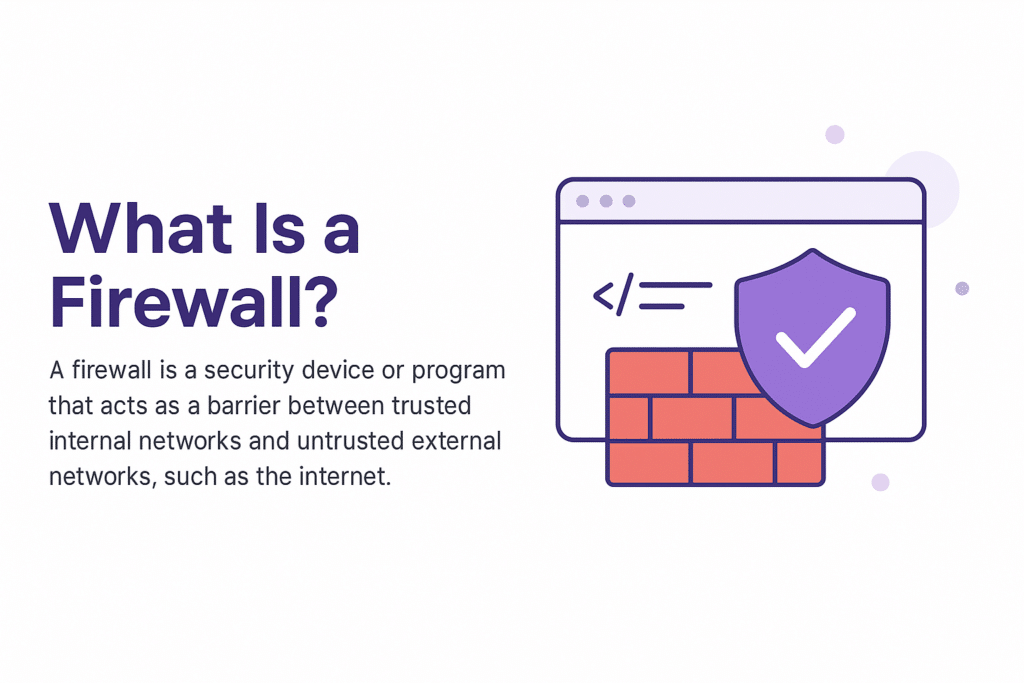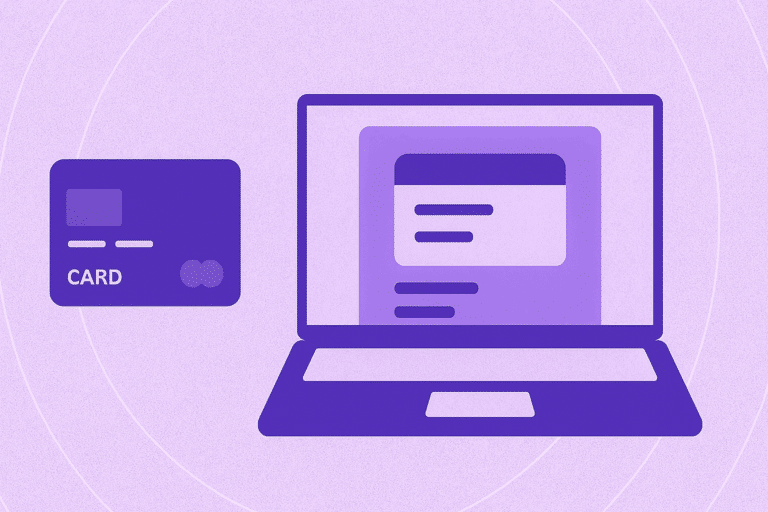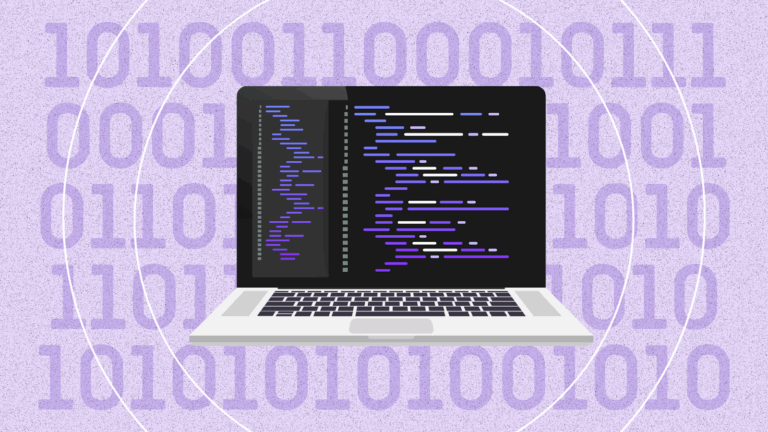Summary
A firewall is a security system—hardware, software, or both—that monitors and controls network traffic based on predetermined rules. It’s critical for safeguarding sensitive data, defending web applications, and ensuring compliance with standards like PCI DSS and HIPAA.

What Is a Firewall?
A firewall is a security device or program that acts as a barrier between trusted internal networks and untrusted external networks, such as the internet. Its primary function is to allow or block data packets based on a set of security rules, thereby preventing unauthorized access and threats like malware, ransomware, or command-and-control callbacks.
Firewalls are foundational to both perimeter and layered security strategies, and they come in various forms: traditional network firewalls, next-generation firewalls (NGFW), and web application firewalls (WAF).
How It Works
Firewalls inspect network traffic using:
- Packet filtering: Evaluates packets against a set of rules.
- Stateful inspection: Tracks the state of active connections and allows only legitimate traffic.
- Proxying: Intercepts all messages between users and services to enforce deep inspection.
- Application-layer filtering: Filters traffic by application type or behavior (common in NGFWs and WAFs).
Based on these techniques, firewalls can allow, deny, log, or reroute traffic depending on source IPs, ports, protocols, and more.
Who Should Be Concerned
Any organization connected to the internet is at risk without proper firewall protection, but particularly:
- E-commerce businesses processing payments
- Healthcare organizations handling PHI
- Financial institutions bound by PCI and GDPR
- SaaS companies managing user data and APIs
- Remote workforces reliant on VPNs and cloud services
Real-World Examples
- Equifax (2017): Attackers exploited a known vulnerability, and lack of proper firewall segmentation allowed lateral movement within systems.
- Capital One (2019): A misconfigured Web Application Firewall enabled unauthorized access to AWS-hosted customer data.
Best Practices
While firewalls are proactive tools, here’s how to optimize their protection:
- Configure access control rules and update them regularly.
- Use NGFWs for deep packet inspection and behavior analytics.
- Deploy Web Application Firewalls (WAFs) to protect client-side scripts and web apps.
- Audit firewall logs and integrate with SIEM tools for threat visibility.
- Combine with SAST/DAST tools for complete DevSecOps coverage.
Where Feroot Comes In
Feroot helps secure the client-side attack surface—something traditional firewalls often miss. Tools like PaymentGuard AI detect and block unauthorized scripts, malicious third-party behavior, and risky content injections before data leaves the browser, ensuring you meet compliance requirements like PCI DSS 4.0 and HIPAA.
FAQ
What’s the difference between a firewall and an antivirus?
A firewall filters network traffic, while an antivirus scans and removes malicious software. They serve complementary roles in a layered security strategy.
Are firewalls enough to secure web applications?
No. Traditional firewalls focus on network-level threats. You also need WAFs, secure coding practices, and client-side monitoring tools like Feroot.
Do cloud-based applications still need firewalls?
Yes. Cloud environments benefit from virtual firewalls and WAFs to protect APIs, containers, and client-side scripts.
How do firewalls help with compliance?
Firewalls help meet requirements in frameworks like PCI DSS, HIPAA, and GDPR by restricting unauthorized access and logging activity.


